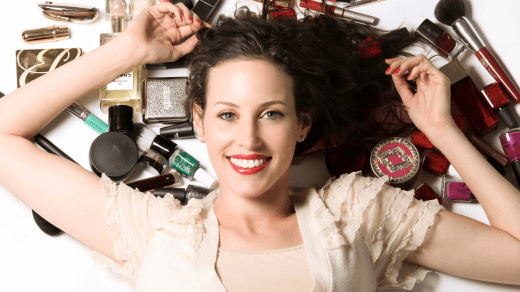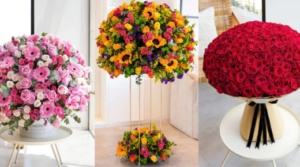Beauty Around the World: Global Beauty Rituals

Beauty Around the World: Global Beauty Rituals
Certainly! Here are 30 points along with their respective pros and cons for Beauty Around the World: Global Beauty Rituals, highlighting beauty practices and traditions from different cultures:
Beauty Around the World: Global Beauty Rituals
1. Traditional Ingredients:
- Pro: Many global beauty rituals incorporate natural and locally sourced ingredients.
- Con: Some ingredients may not be readily available in all regions.
2. Cultural Significance:
- Pro: Beauty rituals often hold cultural and historical significance, preserving traditions.
- Con: Lack of awareness can lead to cultural appropriation.
3. Holistic Approaches:
- Pro: Some rituals emphasize holistic beauty, promoting well-being inside and out.
- Con: Holistic approaches may require lifestyle changes that some find challenging.
4. Time-Honored Techniques:
- Pro: Time-tested techniques have been refined over generations.
- Con: Mastery of these techniques can be time-consuming.
5. Ayurvedic Beauty:
- Pro: Ayurvedic practices, like oil massages, aim for balance and harmony in beauty.
- Con: Ayurvedic treatments may not be well-understood outside of India.
6. Japanese Skincare:
- Pro: Japanese skincare routines focus on gentle cleansing and hydration.
- Con: Japanese products may not be suitable for all skin types.
7. Korean Beauty (K-Beauty):
- Pro: K-Beauty emphasizes a multi-step skincare regimen for glowing skin.
- Con: The extensive routine can be time-consuming.
8. African Beauty Rituals:
- Pro: African rituals celebrate natural beauty and self-expression.
- Con: Traditional practices may face modernization challenges.
9. Middle Eastern Beauty:
- Pro: Middle Eastern beauty emphasizes fragrances and intricate makeup.
- Con: Heavy makeup may not suit everyone’s preferences.
10. Indigenous Beauty: – Pro: Indigenous beauty rituals honor nature and community connections. – Con: Some rituals are at risk of being lost due to cultural changes.
11. Brazilian Beauty Secrets: – Pro: Brazilian beauty rituals often involve natural ingredients like acai and coconut oil. – Con: Recreating these rituals may require access to specific ingredients.
12. Moroccan Hammam: – Pro: The Moroccan hammam is a cleansing and relaxation ritual. – Con: Access to hammams may be limited outside of Morocco.
13. Scandinavian Sauna: – Pro: Sauna rituals in Scandinavia promote relaxation and healthy skin. – Con: Saunas may not be available to everyone.
14. Thai Herbal Compress Massage: – Pro: Thai herbal compress massages offer relaxation and muscle relief. – Con: Access to trained therapists may be limited.
15. Indonesian Lulur Scrub: – Pro: Lulur scrubs in Indonesia exfoliate and soften the skin. – Con: Traditional ingredients may be challenging to find outside of Indonesia.
16. Mexican Temazcal: – Pro: Temazcal ceremonies in Mexico combine spiritual and cleansing elements. – Con: Access to authentic ceremonies may be limited.
17. Russian Banya: – Pro: Russian banya rituals promote detoxification and relaxation. – Con: Traditional banyas may not be readily available worldwide.
18. Greek Olive Oil: – Pro: Greek olive oil is a versatile beauty ingredient used for skincare and haircare. – Con: Authentic Greek olive oil may be expensive in some regions.
19. French Beauty Elegance: – Pro: French beauty emphasizes minimalism and timeless elegance. – Con: High-end French beauty products can be costly.
20. Caribbean Sea Salt Scrubs: – Pro: Caribbean sea salt scrubs exfoliate and invigorate the skin. – Con: Access to Caribbean sea salt may be limited outside the region.
21. Tibetan Ayurveda: – Pro: Tibetan Ayurveda focuses on herbal remedies and meditation. – Con: Limited access to Tibetan herbs and traditions outside of Tibet.
22. Persian Rosewater: – Pro: Persian rosewater is a natural toner and fragrance used for centuries. – Con: Authentic rosewater quality may vary.
23. Australian Indigenous Beauty: – Pro: Australian Indigenous beauty rituals celebrate connection to land and nature. – Con: Some rituals are at risk due to cultural shifts.
24. Malaysian Tungku Batu: – Pro: The Malaysian tungku batu warms the body and is believed to have healing properties. – Con: Traditional practices may not be widely known.
25. Indian Mehndi (Henna): – Pro: Indian mehndi art is a beautiful form of self-expression. – Con: Achieving intricate designs can be time-consuming.
26. Global Trends Influence: – Pro: Global beauty rituals influence the beauty industry and product development. – Con: Cultural appropriation can lead to misunderstandings and insensitivity.
27. Ethical Considerations: – Pro: Awareness of global beauty rituals can lead to more ethical and sustainable beauty choices. – Con: Commercialization can commodify traditional practices.
28. DIY Beauty: – Pro: Many global beauty rituals can be recreated at home with accessible ingredients. – Con: DIY may not replicate the authenticity of traditional practices.
29. Cultural Exchange: – Pro: Exploring global beauty rituals fosters cultural understanding and appreciation. – Con: Misrepresentation or misinterpretation can perpetuate stereotypes.
30. Personalization: – Pro: Incorporating elements of global beauty rituals allows for personalized beauty routines. – Con: Balancing authenticity and personalization can be challenging.
Exploring global beauty rituals can be a fascinating journey of self-discovery and appreciation for diverse cultural traditions. While there are many benefits, it’s essential to approach these practices with respect, cultural sensitivity, and an understanding of their cultural context.







